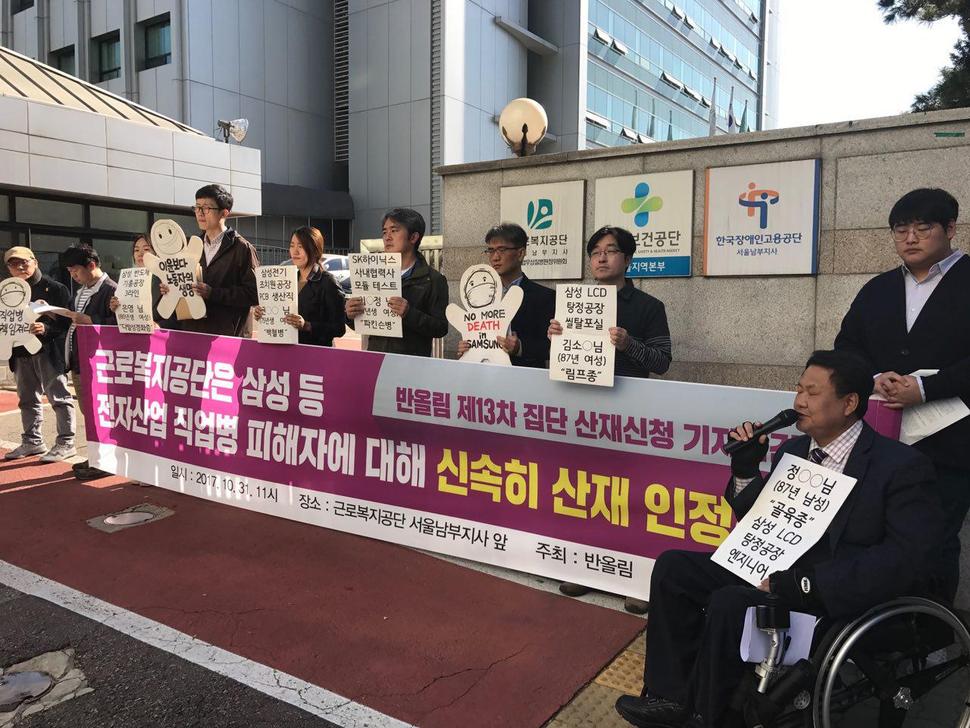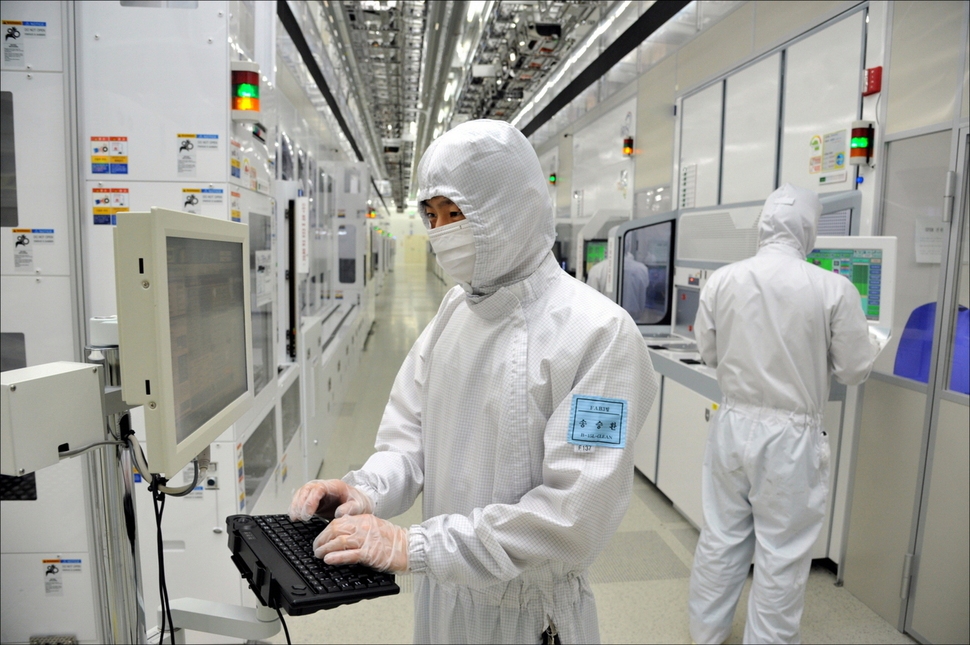 |
|
Members of Banollim, a civic group that advocates for semiconductor plant workers, demonstrate outside the entrance to Samsung Digital City in Suwon to demand that the company provide compensation to victims’ families and acknowledge the link between work at the factories and the deaths of employees from leukemia and other diseases. The sign in the woman’s hand reads, “March 6, 2007: Death of first victim Hwang Yu-mi. Nov. 20: Banollim created. (Yonhap News)
|
Group wants acknowledgment that deaths from leukemia and other illnesses are industrial accidents
“We’re still on the streets. Samsung needs to resolve the issue of occupational diseases!” The cry that filled the air in front of the entrance to Samsung Digital City in Suwon on the morning of Nov. 20 was enough to distract one from the cold spell that had struck so unexpectedly. It was a cry demanding recognition of the industrial accidents that had befallen workers at semiconductor plants and fair compensation for those workers. During a press conference, activists from more than 100 groups – including Banollim, a watchdog group defending the health and human rights of semiconductor plant workers, as well as progressive political parties, organized labor, civic groups and human rights groups – urged Samsung to take action to take part in dialogue and resolve the problem. In the words of the activists, “Samsung must no longer ignore the death of its workers.” This day marked the 10th anniversary since Banollim was established. It was also the 776th day since the group launched an outside sit-in in front of the corporate headquarters of Samsung Electronics near Gangnam Station in Seoul. In March 2007, Hwang Yu-mi, a former worker at a Samsung Electronics factory in Giheung, died of leukemia. That June, Hwang’s bereaved family members applied to the Korea Workers’ Compensation and Welfare Service (KCOMWEL) for industrial accident compensation. This industrial accident claim, which was the first for a semiconductor plant employee, was rejected on the grounds that “the causal relationship between work and disease was not established.” On Nov. 20 of that year, a group was established called the Joint Action Committee for Learning the Facts about the Outbreak of Leukemia at Samsung Semiconductors and for Securing the Basic Rights of Labor, with the involvement of 19 labor and civic groups. As of the group’s founding, Hwang’s family members were still the only victims that had applied for industrial accident compensation for a semiconductor worker. But after a string of cases of workers getting sick or dying not only at Samsung semiconductor plants but also at plants run by other companies, the action committee changed its name to Watchdog for the Health and Human Rights of Semiconductor Workers and launched its campaign to learn the truth about occupational diseases and industrial accidents in the semiconductor industry and to provide workers with compensation. According to Banollim, 393 workers in South Korea’s semiconductor industry have reported coming down with occupational diseases over the past decade, and 144 of them have already lost their lives. There have been 320 reports of disease and 118 deaths at Samsung affiliates alone – such as Samsung Electronics, Samsung Electro-Mechanics and Samsung SDI – accounting for 80% of the total. Nevertheless, the rate at which their medical conditions have been officially recognized as industrial accidents is extremely low. Thus far, Banollim says, 94 individuals have submitted industrial accident claims to KCOMWEL, but only 12 of them have received recognition for their conditions from the agency. 25 of those individuals whose claims were rejected have filed administrative lawsuits, of which 10 have received judgments confirming the industrial accident. Most of the others are in the middle of a long and challenging “struggle for recognition,” in which they must prove the causal relationship between their work and their disease.
 |
|
The semiconductor worker health and human rights watchdog group Banollim holds a press conference on Oct. 31 at the southern Seoul branch of the Korea Workers‘ Compensation and Welfare Service (K-Comwel) to urge the agency to “quickly acknowledge industrial accident status for workers suffering occupational diseases in the electronics industry.” (provided by Banollim)
|
 |
|
Workers on the semiconductor line at Samsung Electronics’ Giheung factory examine product blueprints on computer monitors. (provided by Samsung Electronics; Hankyoreh Archive)
|







